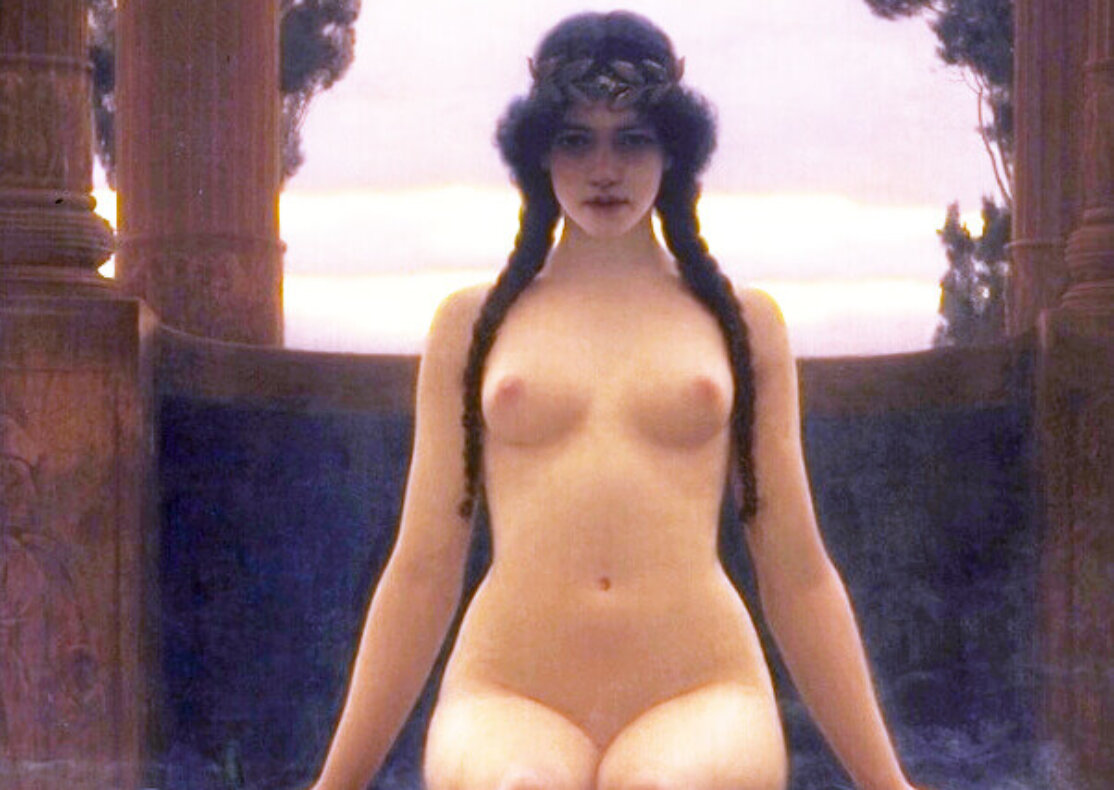Unveiling the Mystery: A Look at John William Godward’s “The Delphic Oracle”
John William Godward’s “The Delphic Oracle” is a captivating glimpse into the ancient world, transporting viewers to the heart of a mythical Greek sanctuary. But what makes this painting so extraordinary? Let’s delve into the details and explore why it continues to enthrall us.
A Master of Neoclassicism
Godward, a leading figure in the Neoclassical movement, painted “The Delphic Oracle” in 1899. This artistic style emphasized the ideals of balance, proportion, and harmony, drawing inspiration from the art and architecture of ancient Greece and Rome. In “The Delphic Oracle,” this is evident in the serene composition, the classically draped figure, and the architectural elements surrounding her.
The Enigmatic Oracle
The painting’s central figure is the oracle herself, a young woman seated regally on a throne. Her expression is ambiguous, hinting at the cryptic nature of her prophecies. Godward leaves it up to the viewer to decide whether she is lost in thought, channeling divine inspiration, or gazing into the future.
A World Steeped in History
The setting for the oracle is equally captivating. She sits amidst a row of towering Doric columns, a signature architectural style of ancient Greece. Beyond the columns, a breathtaking mountainous landscape stretches out, hinting at the sacred location of the oracle’s sanctuary – Delphi, nestled on the slopes of Mount Parnassus.
Beyond the Surface
The beauty of “The Delphic Oracle” goes beyond its visual splendor. The painting is steeped in symbolism. The laurel leaves adorning the oracle’s head represent Apollo, the Greek god associated with prophecy. The golden tripod she sits upon is another symbol of prophecy, associated with the process by which the oracle received her visions.
A Legacy of Enchantment
“The Delphic Oracle” continues to hold a powerful place in the art world. It’s a testament to Godward’s masterful technique, his ability to capture the essence of a bygone era, and the enduring fascination with the world of Greek mythology and prophecy.
So, next time you encounter this painting, take a moment to appreciate the intricate details, the captivating story it tells, and the window it opens into a world of mystery and grandeur.

